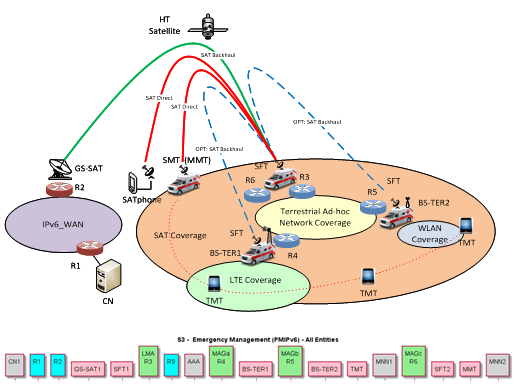PAGE CONTENTS
Objectives
The objective of this project is to develop a new modem, including
- Powerful, future-proof hardware and software platform
- Flexible Topologies and Network Support
- Detailed VRF and QoS Concept
- Network management as Web based application and virtual appliance
- Simplified Installation by USB stick and wizard

The resulting SKYWAN 5G overall offers
- Flexibility in Topologies
- Reliable for Applications
- Attractive in Pricing
- Powerful in Performance
Simplicity in Hardware
Challenges
- Competitive VSAT modem for star- and mesh networks with state-of-the-art performance
- savings in customer logistic with scalability for network growth
- transmission of Layer-2 and Layer-3 traffic
- transmission with extremely low jitter for voice or real-time processes
- Seamless integration of an additional DVB-S2X link with ACM capability to a true full mesh (hubless) MF-TDMA design with minimum configuration effort.
- Allow multiple DVB-S2 links concurrently and give customer the freedom to put DVB-S2X transmitters at any site where Cloud or traffic sources are connected.
SYSTEM ARCHITECTURE
SKYWAN 5G implements both MF-TDMA and DVB-S2X satellite links. Based on the 5G THE ONE (a 1U unit), by cascading the transmission performance can be increased while still be seen as one node by NMS.
The DVB receiver in a 1U unit allows receiving DVB traffic coming from one DVB transmitter. Each DVB receiver automatically performs authentication at its DVB transmitter and ACM messaging.
Networks may be structured with multiple DVB transmitting sites at any location. SKYAN 5G nodes from different mesh networks may be grouped to listen to one DVB transmitting site. Another option is to engineer one TDMA network but use several DVB transmitters as traffic sources.
The term “hub” is not applicable anymore:
- a remote with DVB transmitter(s) can be a “traffic hub”.
- Network growth will benefit from this architecture: start with 2 nodes, add further nodes and DVB and network structure or segmentation as you like.
- With SKYWAN’s architectural concept of geo-redundant network control for mesh, each 5G node can become Master. This capability is a software function; any 1U unit can be configured to automatically take-over in case of prime Master failure. Hardware failures of a DVB transmitter can be remedied by a stand-by DVB transmitter – at the same or at another location.
SKYWAN 5G was designed to fit all network scenarios.
Plan
The project covers the specification, design, implementation and verification up to the product release of SKYWAN 5G to the field.
Current Status
The SKYWAN 5G project with development of a new hardware modem generation including DVB-S2 was successfully completed in November 2016.
The modem SKYWAN 5G is in series production since July 2015. The DVB-S2 capability is the last feature that was added to this product and released for general availability in October 2016.
As per November 2016, several networks with DVB-S2 for final network sizes of 2500 terminals were sold using the product release developed in this ESA programme.
Related Links
Companies


